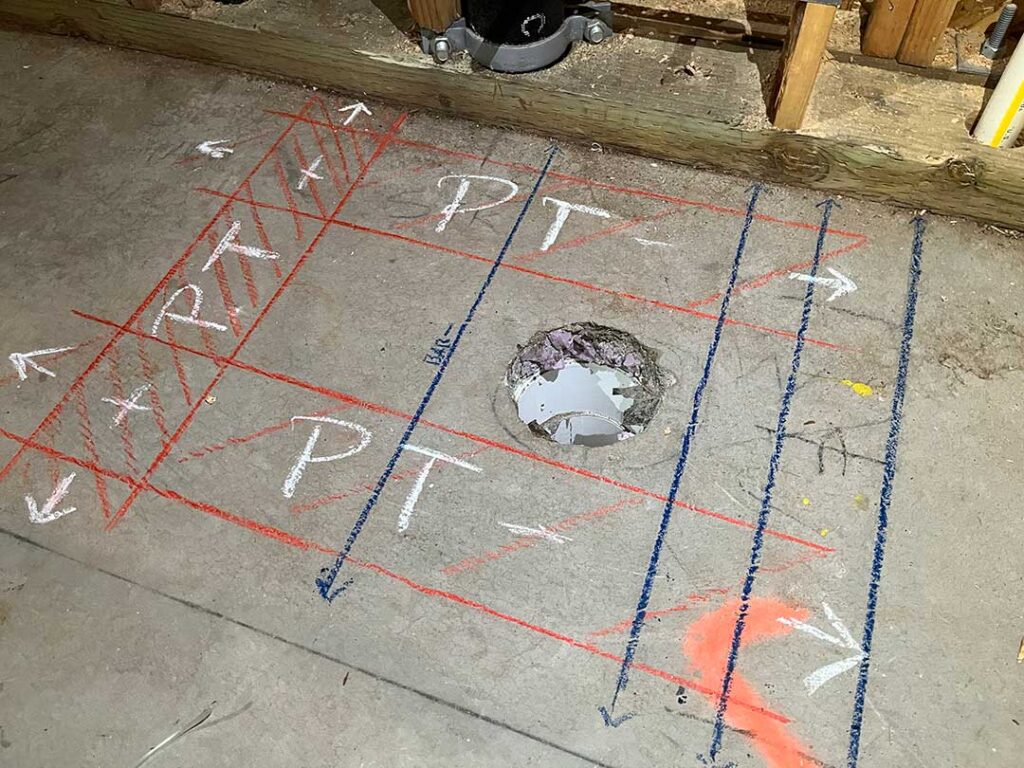The Ultimate RainierGPR Concrete Scanning Remedy Clarified
The Ultimate RainierGPR Concrete Scanning Remedy Clarified
Blog Article
Checking Out the Depths: A Comprehensive Guide to Concrete Scanning and Its Diverse Applications
In the realm of building and infrastructure growth, the meticulous procedure of concrete scanning holds a critical function in making certain the architectural integrity and safety and security of tasks. As modern technology continues to develop, the applications of concrete scanning have broadened far beyond simple surface-level evaluations. From spotting rebar and post-tension wires to mapping out channels and spaces concealed within concrete structures, the capacities of contemporary scanning strategies are both vital and impressive. Nonetheless, real depth of concrete scanning's prospective reaches even further, branching into unexpected markets and stimulating cutting-edge options. The interconnected internet of possibilities that concrete scanning provides is not only fascinating yet additionally vital for the development of various sectors.
Importance of Concrete Scanning
Understanding the importance of concrete scanning is important in ensuring the security and honesty of frameworks throughout building and improvement projects. Concrete scanning utilizes advanced innovations such as ground-penetrating radar (GPR) and electromagnetic induction to find ingrained items, gaps, or various other anomalies within concrete frameworks - RainierGPR Concrete Scanning. By performing complete scans before exploration, cutting, or coring right into concrete, building teams can avoid unintended damage to crucial architectural elements like rebar, conduits, or post-tension cords. This proactive method not only avoids expensive repairs and job hold-ups but additionally boosts overall building safety and security by mitigating the threat of architectural failures or collapses as a result of jeopardized honesty.
Furthermore, concrete scanning plays a critical role in guaranteeing conformity with building regulations and laws that mandate the defense of existing architectural elements throughout building and construction activities. By accurately drawing up the inner structure of concrete, scanning modern technologies allow building experts to make informed choices that maintain the structural stability and longevity of buildings and framework projects. In significance, the significance of concrete scanning lies in its capacity to guard both the structural honesty and the employees involved in building and construction endeavors.
Technologies Made Use Of in Concrete Scanning
Concrete scanning depends on advanced modern technologies such as ground-penetrating radar (GPR) and electro-magnetic induction to precisely identify embedded things and anomalies within concrete frameworks. Ground-penetrating radar runs by giving off high-frequency electro-magnetic waves into the concrete.
Electromagnetic induction, on the other hand, functions by generating magnetic fields around a concrete framework via a transmitter coil. When steel things are existing within the concrete, they interrupt these magnetic fields, causing eddy currents to stream through the metal. By measuring the adjustments in the electromagnetic fields with a receiver coil, the system can determine the place of metal things in the concrete.
These sophisticated modern technologies play an important role in non-destructive screening, guaranteeing the safety and security and honesty of concrete structures in various sectors.
Applications in Building And Construction Market
Within the building sector, concrete scanning innovation finds varied applications that boost job performance and safety and security. In addition, concrete scanning is made use of for locating spaces, such as air pockets or locations of deterioration within concrete, which can jeopardize the overall toughness of a structure. Concrete scanning plays a vital function in top quality control by verifying the density of concrete covers over support, ensuring compliance with layout specifications and requirements.

Safety And Security Advantages of Concrete Scanning
In the world of building and construction safety and security, the execution of concrete scanning technology presents a vital advantage in preemptively determining prospective threats and strengthening architectural honesty. By making use of innovative scanning approaches such as ground-penetrating radar (GPR) and electromagnetic induction, construction teams can accurately locate rebar, post-tension wires, channels, and other concealed objects within concrete frameworks. This aggressive approach considerably minimizes the danger of accidental strikes during drilling, reducing, or coring tasks, consequently stopping costly damages, injuries, and job delays.
Furthermore, concrete scanning enhances worker safety by giving real-time details regarding the structural problem of concrete components. This information allows construction specialists to examine the stability of existing structures, identify degeneration or problems, and make educated choices concerning repair work and upkeep treatments. By addressing potential safety problems promptly, concrete scanning contributes to producing a secure working environment and minimizing the possibility of architectural failures or mishaps on building and construction websites. Inevitably, the security advantages additional reading of concrete scanning not only protect lives and possessions yet also promote market requirements for high quality and integrity.
Future Fads in Concrete Scanning
Arising developments in scanning modern technology are positioned to revolutionize the field of concrete assessment and analysis. One major trend that is acquiring traction is the combination of expert system (AI) and device knowing algorithms right into concrete scanning devices. By taking advantage of the power of AI, these systems can evaluate substantial amounts of information collected during scanning procedures to give even more exact and thorough insights into the condition of concrete structures. This can assist in spotting right here covert flaws, anticipating prospective structural failings, and also recommending maintenance methods.
An additional considerable pattern is the development of more straightforward and mobile scanning devices. Miniaturization of scanning equipment enables easier accessibility to constrained areas and remote areas, making inspections more detailed and reliable. Furthermore, developments in wireless communication innovations enable real-time information transfer and evaluation, assisting in quicker decision-making procedures.
Additionally, there is a growing emphasis on sustainability in concrete scanning innovations - RainierGPR Concrete Scanning. Producers are increasingly including green products and energy-efficient features right into their tools to reduce environmental influence. These future fads are established to improve the effectiveness, precision, and sustainability of concrete scanning practices, forming the sector's future landscape
Conclusion
In verdict, concrete scanning plays a vital function in the building and construction industry by guaranteeing the security and effectiveness of various tasks. As technology advances, the future of concrete scanning holds appealing growths for improving building procedures.

Report this page